Securing your domain name in the Canadian market is vital for protecting your online identity and assets. By following best practices such as choosing a reputable registrar, enabling privacy protection, and implementing strong security measures, you can safeguard against unauthorized access and domain theft. Additionally, understanding the legal landscape, including trademark laws and dispute resolution processes, is essential for maintaining your rights and ensuring compliance.
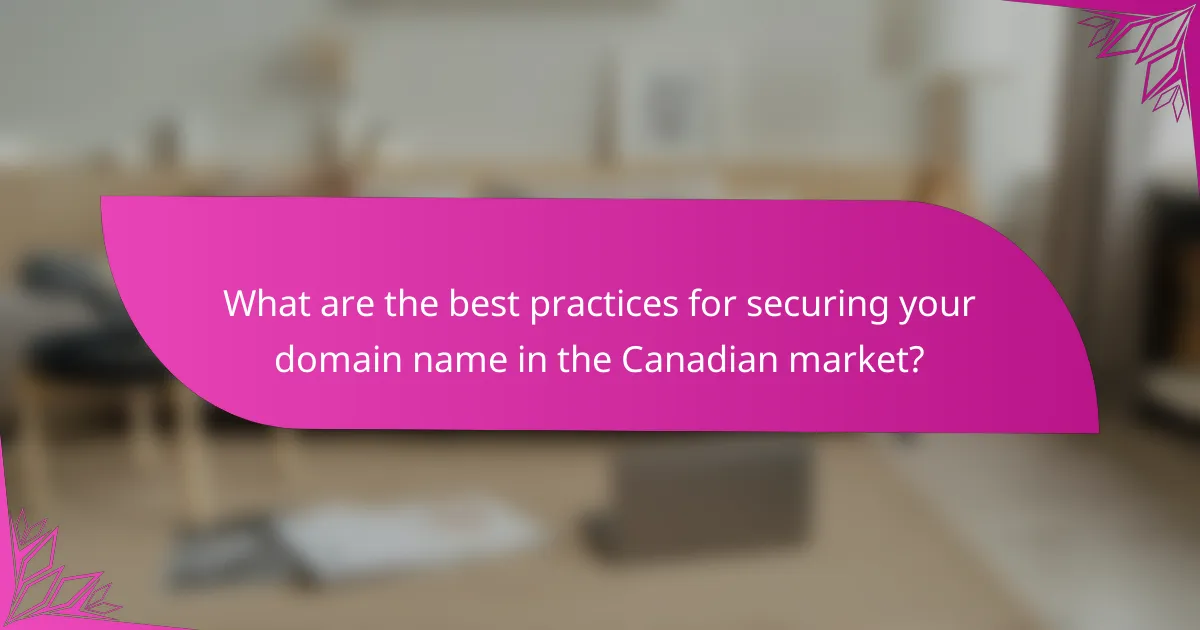
What are the best practices for securing your domain name in the Canadian market?
To effectively secure your domain name in the Canadian market, it’s essential to follow several best practices that protect your online identity and assets. These practices include choosing a reputable registrar, enabling privacy protection, using strong passwords, monitoring your domain status, and keeping your contact information current.
Register with a reputable registrar
Selecting a reputable domain registrar is the first step in securing your domain name. Look for registrars that are accredited by the Internet Corporation for Assigned Names and Numbers (ICANN) and have a solid track record of customer service and security features.
Consider registrars that offer additional services such as domain management tools, SSL certificates, and customer support. Popular choices in Canada include GoDaddy, Namecheap, and Google Domains, all of which provide a range of features to enhance domain security.
Enable domain privacy protection
Domain privacy protection helps shield your personal information from public view in the WHOIS database. By enabling this feature, your registrar replaces your contact details with their own, reducing the risk of spam and identity theft.
This service often comes at a nominal annual fee but is worth the investment for the added layer of security. Many registrars include privacy protection for free or at a low cost, making it an accessible option for most domain owners.
Use strong passwords and two-factor authentication
Creating strong, unique passwords for your domain registrar account is crucial for security. Use a combination of upper and lower case letters, numbers, and special characters, aiming for a length of at least 12 characters.
Additionally, enable two-factor authentication (2FA) whenever possible. This adds an extra layer of security by requiring a second form of verification, such as a text message or authentication app, making unauthorized access significantly more difficult.
Regularly monitor domain status
Regularly monitoring your domain status helps you detect any unauthorized changes or potential threats. Set up alerts for any modifications to your domain settings, such as DNS changes or transfers, to stay informed.
Consider using monitoring services that notify you of any suspicious activity or changes to your domain registration. This proactive approach can help you respond quickly to potential security breaches.
Keep contact information updated
Keeping your contact information current with your registrar is essential for maintaining control over your domain. If your email or phone number changes, update your records promptly to ensure you receive important notifications.
Accurate contact information is also critical for domain recovery processes. If you lose access to your account, having the correct details can expedite the recovery process and help prevent loss of ownership.
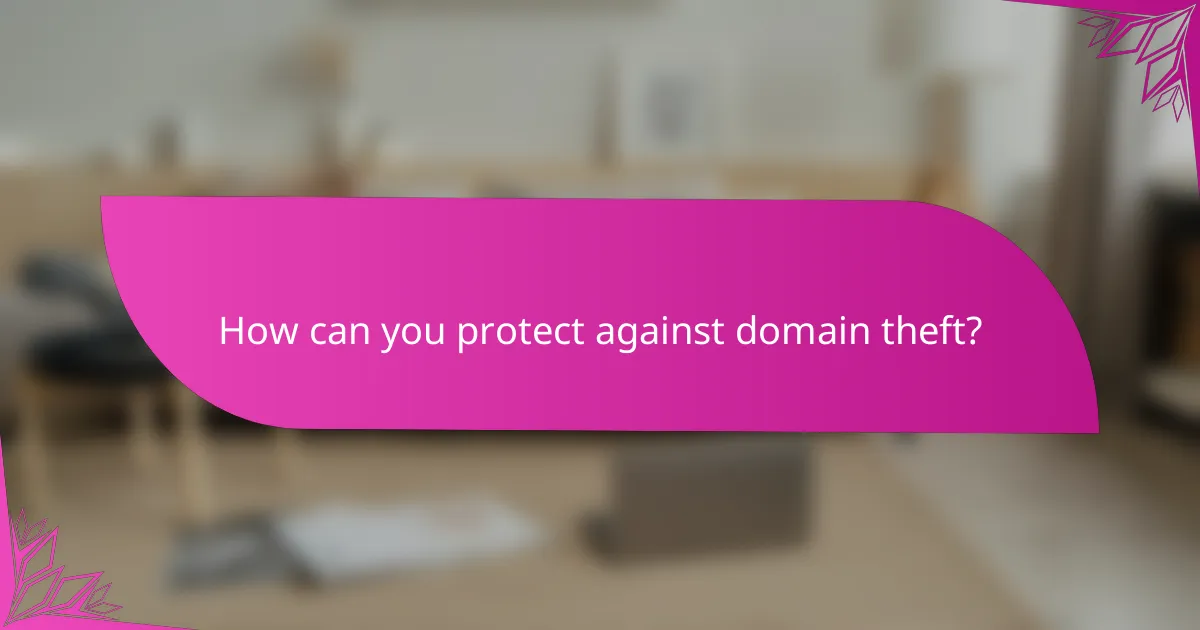
How can you protect against domain theft?
To protect against domain theft, implement security measures that safeguard your domain name from unauthorized access and transfer. This includes utilizing domain locking, registrar security features, and being vigilant against phishing attempts.
Implement domain locking
Domain locking is a crucial step in preventing unauthorized transfers of your domain name. When you enable this feature, it restricts any changes to your domain’s status, making it more difficult for thieves to move your domain to another registrar.
Most registrars offer this service, often referred to as “Registrar Lock” or “Domain Lock.” Ensure that you check the status of your domain regularly and keep it locked when not in use.
Utilize registrar security features
Many domain registrars provide additional security features to protect your domain. These may include two-factor authentication (2FA), account recovery options, and notifications for any changes made to your account.
Enabling 2FA adds an extra layer of protection by requiring a second form of verification when accessing your account. Regularly review your registrar’s security settings and update them as necessary to enhance your domain’s security.
Be cautious with email phishing
Email phishing is a common tactic used by cybercriminals to gain access to your domain account. Be wary of unsolicited emails that request sensitive information or prompt you to click on suspicious links.
Always verify the sender’s email address and look for signs of phishing, such as poor grammar or generic greetings. Use a dedicated email address for your domain registrar and consider using email filtering tools to help identify potential threats.
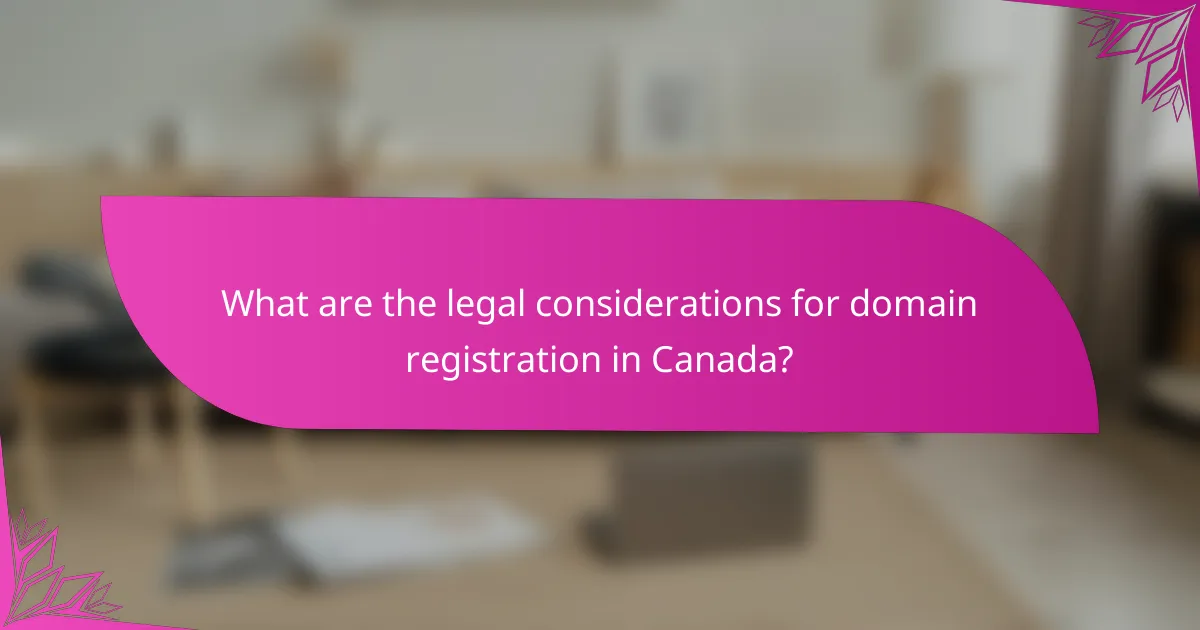
What are the legal considerations for domain registration in Canada?
When registering a domain name in Canada, it’s crucial to understand the legal landscape, including trademark laws and dispute resolution processes. These considerations help protect your rights and ensure compliance with regulations.
Understand trademark laws
Trademark laws in Canada protect brand names and logos used in commerce. When selecting a domain name, ensure it does not infringe on existing trademarks, as this could lead to legal disputes or loss of the domain.
Conduct a thorough trademark search using resources like the Canadian Intellectual Property Office (CIPO) database. If your domain name is similar to a registered trademark, consider modifying it to avoid potential conflicts.
Know the UDRP process
The Uniform Domain-Name Dispute-Resolution Policy (UDRP) is a process established to resolve disputes regarding domain names. If someone claims your domain infringes on their trademark, they may file a UDRP complaint.
Familiarize yourself with the UDRP rules and procedures, as they provide a framework for resolving disputes without going to court. A successful UDRP complaint can result in the transfer of your domain name, so understanding this process is essential for domain owners.
Register your domain under a business entity
Registering your domain name under a business entity, such as an LLC or corporation, can provide legal protections and limit personal liability. This approach separates your personal assets from your business operations.
When registering, ensure that the business name is unique and not already in use. This not only helps in avoiding trademark issues but also enhances your brand’s credibility in the market.
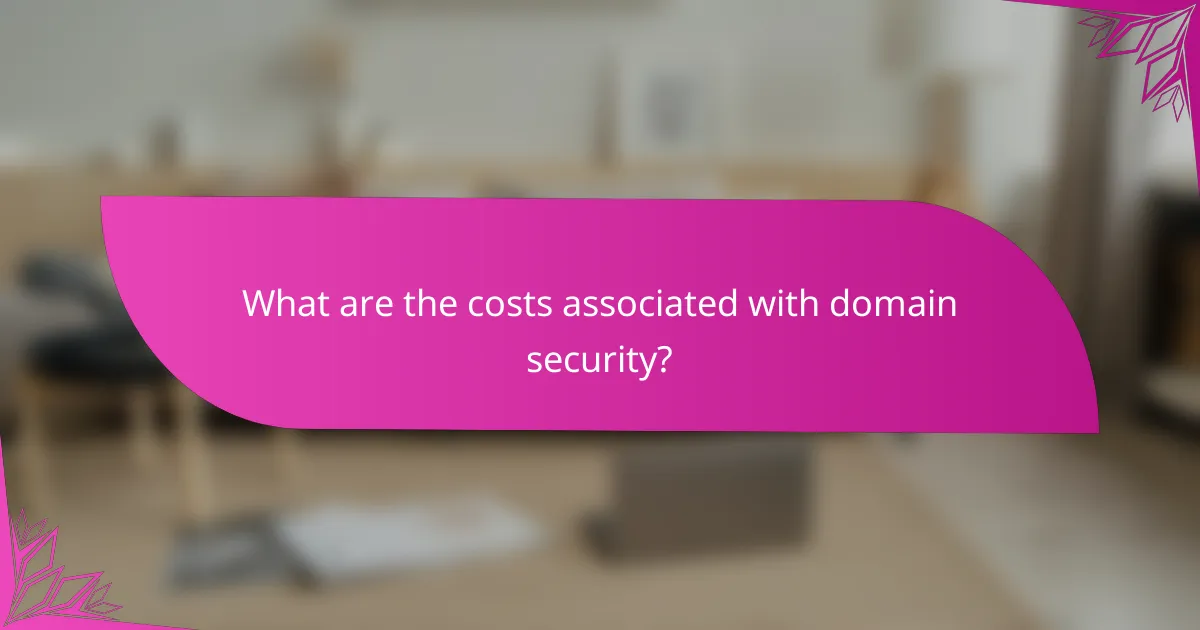
What are the costs associated with domain security?
Securing your domain name in the Canadian market involves various costs that can add up over time. Key expenses include annual registration fees, privacy protection costs, and potential legal fees, all of which are essential for maintaining a secure online presence.
Annual registration fees
Annual registration fees are the primary cost associated with owning a domain name. These fees typically range from $10 to $50 per year, depending on the domain registrar and the top-level domain (TLD) you choose. It’s important to compare prices across registrars to find the best deal.
Some registrars may offer discounts for multi-year registrations, which can save you money in the long run. Be aware of renewal rates, as they can differ from initial registration prices.
Privacy protection costs
Privacy protection, often called WHOIS privacy, helps shield your personal information from public databases. This service usually costs between $5 and $15 annually, depending on the registrar. It is highly recommended for individuals and businesses looking to maintain their privacy online.
When selecting a registrar, check if privacy protection is included in the registration fee or if it is an additional cost. Some registrars offer it for free as part of their service package, which can be a significant advantage.
Potential legal fees
Legal fees can arise if you face disputes over your domain name, such as trademark infringement claims or domain hijacking. Costs for legal representation can vary widely, but you might expect to pay anywhere from a few hundred to several thousand dollars, depending on the complexity of the case.
To mitigate potential legal costs, consider conducting a trademark search before registering a domain name. This proactive step can help you avoid conflicts and the associated expenses down the line.
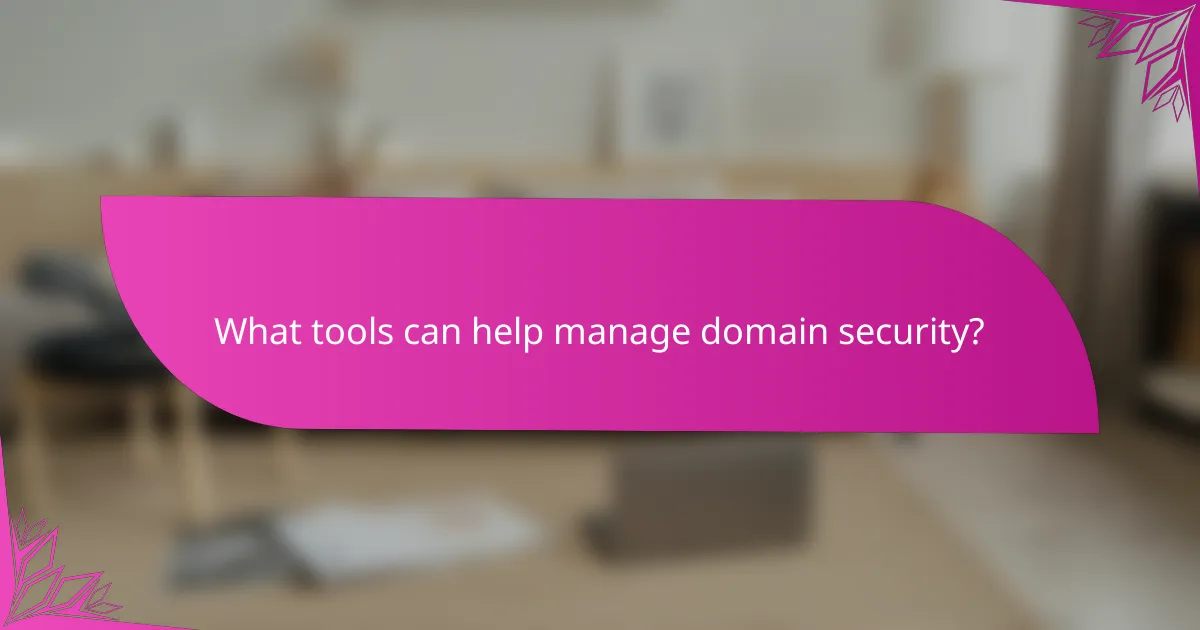
What tools can help manage domain security?
Managing domain security effectively requires a combination of tools that can monitor, protect, and manage your domain name. Key tools include domain registrars, DNS management services, and security software that provide features like two-factor authentication and domain locking.
Domain Registrars
Domain registrars are essential for securing your domain name. Choose a reputable registrar that offers robust security features such as domain locking, which prevents unauthorized transfers, and WHOIS privacy protection to keep your personal information confidential.
Popular registrars like GoDaddy, Namecheap, and Google Domains provide user-friendly interfaces and additional security options. Compare their offerings to find one that best suits your needs, especially regarding customer support and renewal costs.
DNS Management Tools
DNS management tools allow you to control your domain’s DNS settings, which is crucial for security. Services like Cloudflare and Amazon Route 53 offer advanced features such as DNSSEC, which helps protect against DNS spoofing and cache poisoning.
When selecting a DNS management tool, consider factors like uptime guarantees, speed, and ease of use. Implementing DNS security measures can significantly reduce the risk of attacks on your domain.
Security Software
Security software plays a vital role in protecting your domain from cyber threats. Look for solutions that offer features like malware scanning, intrusion detection, and firewalls. Tools such as Sucuri and SiteLock can help monitor your domain for vulnerabilities.
Additionally, enable two-factor authentication (2FA) for your registrar and hosting accounts to add an extra layer of security. Regularly update your passwords and use strong, unique passwords for each account to minimize risks.
